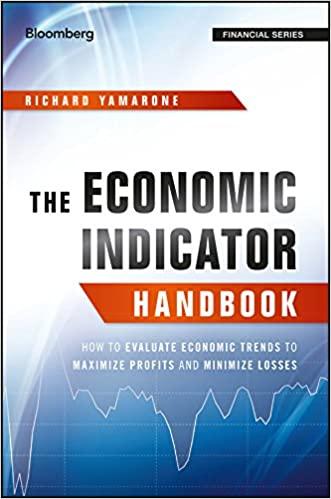Question
2) Arnold Benedict is thinking of buying an apartment complex that is offered for sale by the firm of Getabinder and Flee. The price, $2.25
2) Arnold Benedict is thinking of buying an apartment complex that is offered for sale by the firm of Getabinder and Flee. The price, $2.25 million, equals the propertys market value. The following statement of income and expense is presented for Benedicts consideration: The Sated Satyr Apartments Prior Years Operating Results Presented by Getabinder and Flee, Brokers ----------------------------------------------------------------------------------------------------------- 30 Units, All Two-Bedroom Apartments, $975 per Month $351,000 Washer and Dryer Rentals 10,000 Gross Annual Income Less Operating Expenses: $361,000 Managers Salary $10,000 Maintenance Staff (one person, part time) 7,800 Seedy Landscapers 1,300 Property Taxes 13,000 32,600 Net Operating Income $328,400 ----------------------------------------------------------------------------------------------------------- By checking the electric meters during an inspection tour of the property, Benedict determines the occupancy rate to be about 80 percent. He learns, by talking to tenants, that most have been offered inducements such as a months free rent or special decorating allowances. A check with competing apartment houses reveals that similar apartment units rent for about $895 per month and that vacancies average about 7 percent. Moreover, these other apartments have pools and recreation areas that make their units worth about $35 per month more than those of the Sated Satyr, which has neither. The tax assessor states that the apartments were reassessed 12 months ago, and that current taxes are $76,374. Benedict learns that the resident manager at Sated Satyr, in addition to a $10,000 salary, gets a free apartment for her services. He also discovers other expenses: insurance will cost $6.50 per $1,000 of coverage, based on estimated replacement cost of about $1.8 million; workers compensation ($140 per annum) must be paid to the state; utilities, incurred to light hallways and other common areas, cost about $95 per month for similar properties; supplies and miscellaneous expenses typically run about .25 percent of effective gross rent. Professional property management fees in the market area typically are about 5 percent of effective gross income. Based on this information that Benedict obtained and assuming typically competent, professional management, Benedict arrived at the following reconstructed operating statement as shown below: The Sated Satyr Apartments Reconstructed Operating Statement ----------------------------------------------------------------------------------------------------------- Potential Gross Rent (30 Units, at $860 per month) $ 309,600 Less: Allowance for Vacancies (7 percent) 21,672 Plus: Other Income (Laundry and vending Machines) 7,500 Effective Gross Income Less: Operating Expenses: Management Fee (5% of effective gross income) $ 14,771 Resident Manager (Salary Plus Free Rent) 20,320 Utilities 1,140 Property Insurance 11,700 Workers' Compensation Insurance 140 Supplies and Miscellaneous (.0025 X $299,250) 748 Landscaping and Grounds Maintenance 3,300 Maintenance and Repairs 7,800 $ 295,428 Property Tax 76,374 136,293 Net Operating Income (Annual) $ 159,135 With information from above, calculate the BTCFs for each of the 5-year holding period. Include debt service to get final BTCF. Using the capitalization rate (159135/2250000)*100 = 7.073% , assuming that it will remain constant over the holding period, estimate the propertys market value at the end of the 5 year holding period. Assuming that transaction costs (brokerage, legal and accounting fees, and so forth) equal 8 percent of the sales price, determine the BTER from the sale of the property. Using the information from above and the following assumptions, we next need to arrive at the ATCFs (from operation) and the ATER (from reversion). We can assume: Eighty percent of the purchase price is attributed to the buildings The taxpayer is in the 40 percent marginal income tax bracket and will incur no liability for the alternative minimum tax during the projected holding period. It is assumed that the property is put into service on January 1st and sold on December 31st Assume the client is "active" in the property management. It is assumed that the client has an adjusted gross income of $95,000 and has no other passive income not offset by other passive losses (for each year of the anticipated holding period).
Step by Step Solution
There are 3 Steps involved in it
Step: 1

Get Instant Access to Expert-Tailored Solutions
See step-by-step solutions with expert insights and AI powered tools for academic success
Step: 2

Step: 3

Ace Your Homework with AI
Get the answers you need in no time with our AI-driven, step-by-step assistance
Get Started


